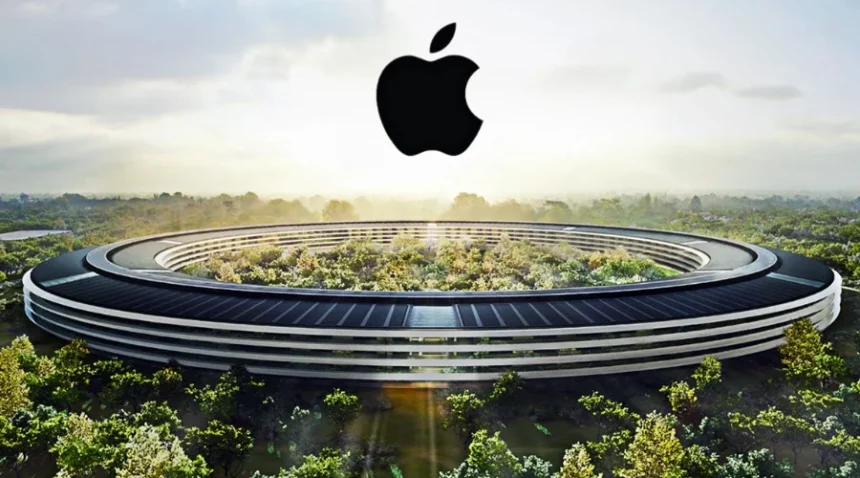Among the tech companies that have been in the centre especially in the recent past due to the effect on the environment is Apple Inc. Apple being one of the largest corporate giants in the world remains a prime target for imitation and close observation with regard to sustainable business operations. Apple’s Eco-friendly Strategy to reduce waste and recycle plays a role in achieving the intended goal of the company while at the same time creating benchmarks in the industry. In this blog, we are going to look at the outline of Apple’s Eco-friendly Strategy in terms of its goals, achievements, challenges and future prospects.
Apple’s Eco-friendly Strategy: A Commitment to Environmental Responsibility
It is argued that Apple’s Eco-friendly Strategy is anchored on the company’s commitment to sustainability. Principal themes of the environmental policy of the company include respectively the protection of resources and the reduction of waste and carbon dioxide emissions. This is evident by Apple’s Eco-friendly Strategy to reach net-zero carbon emissions in the company and in the supply chain by the year 2030. This was highlighted in the company’s Environmental Progress Report.
Reducing Carbon Footprint
Renewable Energy
Currently, there is a great emphasis on the employment of renewable energy resources as the company’s environmental policies. The company became 100% powered by renewable energy sources in all its facilities in 2018 in all the facilities located in different countries across the world. This applies to all its corporate stores, outlets and data centres. Apart from its own supply, Apple also encourages its suppliers to reduce their dependence on clean energy as part of their renewable energy plan. Over 80 of their suppliers by 2023 switched to renewable power sources.
Carbon Neutrality
Apple has several plans which it wants to implement in its effort to become carbon neutral by the year 2030. It can be noted the company has declared objectives in Apple’s Eco-friendly Strategy that are in concord with the entire supply chain from the purchasing of input materials to the final disposal of the products. This entails increasing energy efficiency, switching to renewable energy, and funding cutting-edge carbon removal technology.
Product Design and Manufacturing

Material
When it comes to using sustainable materials, Apple is setting the standard. The MacBook Air and Mac mini are among the devices the company has vowed to utilise entirely of recycled aluminium. In addition, the company is working to use recycled rare earth elements in its devices. These materials are used in various electronic products but are often mined in an unsustainable manner that is harmful to the environment.
Product Longevity
Apple’s Eco-friendly Strategy also includes an extension of the product’s life cycle. Apple attempts to extend the usage duration of particular products, by making their build robust, and easy to repair. Apple’s Eco-friendly Strategy has a trade-in program which gets customers to bring in their old electronics and at the same time offers repair services. This method minimises the requirement for fresh raw materials while also reducing electronic waste.
Minimising Electronic Waste

Recycling
Apple’s Eco-friendly Strategy can largely be understood by focusing on their recycling programmes. The Company has implemented a global recycling program whereby customers can return their old electronics for ethical recycling. Apple also applies advanced recycling technologies, for example, Daisy that is capable of dismantling electronics to look for valuable materials. Thus, the amount of electronic waste which is dumped into the landfills is reduced with Apple’s Eco-friendly Strategy.
Environmental Impact
The packaging of products has also experienced considerable changes with an aim of minimising its effects on the environment under Apple’s Eco-friendly Strategy. It has also managed to phase out plastics from packaging, and there are constant efforts in sourcing paper from sustainably managed forests only. This action not only helps in the fight against unnecessary wastage but also promotes good forestry practices.
Energy Efficiency and Climate Impact
Energy-Efficient
Apple’s Eco-friendly Strategy is dedicated to making its products more energy-efficient. The corporation intends to lower its entire carbon impact by designing its products to fulfil strict energy efficiency criteria. For example, over the course of their lifetime, Apple products frequently use less energy than required by legal criteria for energy efficiency.
Climate Change
Apple’s Eco-friendly Strategy understands that combating climate change calls for cooperation among all parties. The company aggressively advocates for climate change, both via its own programs and by lending support to larger industry endeavours. Apple has been a leading voice in favour of stricter climate legislation and has collaborated with other businesses to encourage environmentally friendly practices in the technology industry.
Apple Restore Fund: Important Mechanism of Apple’s Eco-friendly Strategy
The predicted funding gap needed to combat climate change and biodiversity loss is currently between $600 and $800 billion annually. With the Restore Fund, Apple’s Eco-friendly Strategy aims to close this disparity by funding initiatives that generate scalable and sustainable business models that benefit the nations, areas, and communities in which they operate economically. Along with the upstream and downstream value chains of the projects—such as nurseries for seedlings and paper and packaging—Apple’s investments also directly assist the local people that surround the initiatives.
Partnerships: Integral Part of Apple’s Eco-friendly Strategy
In order to assist in creating better nature-based solutions, increase climate resilience, and provide economic benefits to the people most affected by climate change, Apple has also provided support to a number of non-profit groups worldwide.
The Conservation Fund and World Wildlife Fund
More than a million acres of working forests in China and the United States have seen substantial management improvements because of this agreement, which was signed in 2015.
World Wildlife Fund
Apple collaborated with different parties to develop the Nature-Based Solutions Origination Platform, which uses public and private mechanisms to mobilise long-term sustainable finance and design interventions in priority tropical forest landscapes to drive effect across those landscapes.
Conservation International
To preserve some of the most fragile ecosystems on the planet, Apple funded the establishment of the world’s first Irrecoverable Carbon Finance Lab. The immense reserves of carbon in nature known as irrecoverable carbon are susceptible to release from human activities and, if lost, cannot be replenished.
China Green Carbon Foundation and SEE Foundation
China’s number of nature-based carbon projects has increased thanks to support from Apple for research and pilot projects.
Apple has participated in several international initiatives that seek to extend the market and promote an increase in the level of open and transparent behaviours. Some of them include the World Economic Forum (WEF), the World Business Council for Sustainable Development (WBCSD) and the Forest Investor Club.
Challenges for Apple’s Eco-friendly Strategy
Apple’s Eco-friendly Strategy has not been without challenges, despite its ambitious goals and notable successes. Among the main areas of concern include.
Supply Chain Transparency
Despite the progress made on sustainability in the supply chain in Apple, challenges relating to accountability and transparency are still a subject of concern for Apple’s Eco-friendly Strategy. Critics contend that the business must give more thorough information regarding the environmental policies of its suppliers and the effects of where it sources its raw materials.
Product Repairability
Although Apple continues to strive to increase the product’s service life and ease the repair process of their devices, some critics argue that their products remain difficult to upgrade and fix. Customers and independent repair businesses may encounter difficulties due to the unique design of several components and the scarcity of repair parts.
Apple’s Eco-friendly Strategy: Way Forward
Apple is expected to concentrate its efforts in the following areas in the upcoming years as it pushes the boundaries of sustainability.
Advancing Recycling Technologies
To increase the effectiveness of material recovery and cut waste, Apple is probably going to make more investments in cutting-edge recycling technologies. This entails streamlining current procedures and investigating fresh approaches to recycling materials that are presently hard to recover.
Sustainable Supply Chain
Apple is going to continue to press forward towards making its supply chain even more sustainable. This entails encouraging ethical raw material mining methods, improving supply chain transparency, and cutting emissions even more.
Innovative Designs
It is anticipated that Apple will look into novel approaches to creating even more sustainably designed goods. This could entail creating new materials, increasing the energy economy, and simplifying the recycling and repair of things.
Other Initiatives
- Phasing out the use of leather in Apple Watch bands and iPhone covers
- Using more ocean freight rather than air travel in order to cut transportation emissions by 95%.
- Funding international initiatives to save trees, plants, and soil programs to remove carbon that involves reforesting and restoring mangroves in places like Kenya, Paraguay, Brazil, and Colombia
Conclusion
Apple’s Eco-friendly Strategy embodies an exhaustive and aspirational commitment to sustainability. Apple is setting a precedent for the entire technology industry with its strategy. It is focusing on reducing carbon emissions, enhancing its products, reducing e-waste, and advocating for climate change. It is without a doubt that, as Apple continues to innovate and set the trend in this area, other companies will possibly be inspired to do the same. This means that there will be more efforts towards making the IT industry and other industries sustainable and less destructive to the environment.
For more information visit Thepost247.
FAQs




















